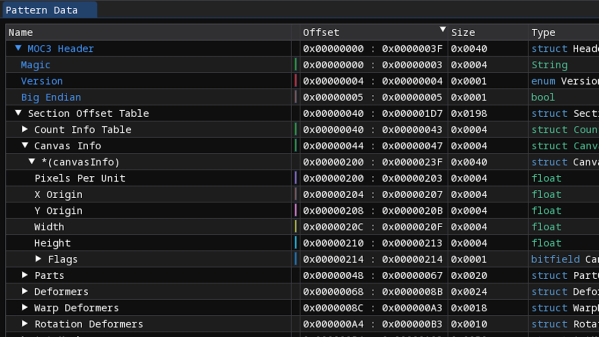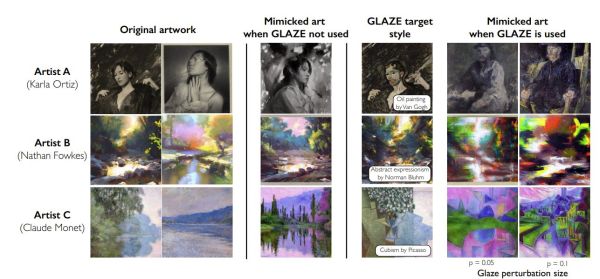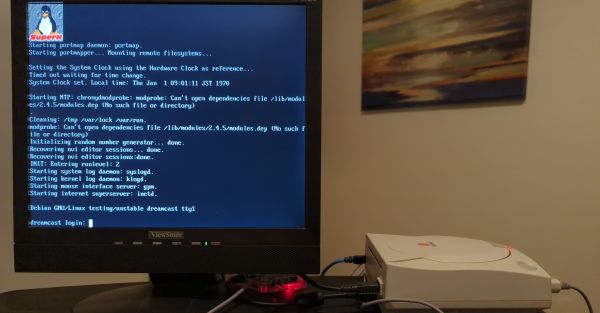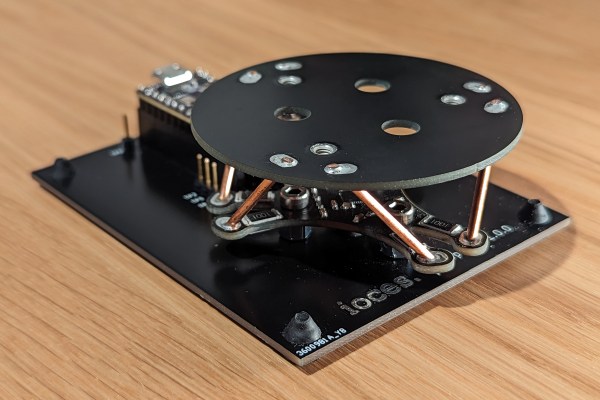In online spaces, VTubers have been steadily growing in popularity in the past few years – they are entertainers using motion capture tech to animate a special-sauce 2D or 3D model, typically livestreaming it as their avatar to an audience. The tech in question is pretty fun, lively communities tend to form around the entertainers and artists involved, and there’s loads of room for creativity in the VTuber format; as for viewers, there’s a VTuber for anyone’s taste out there – what’s not to like? On the tech side of making everything work, most creators in the VTubing space currently go with a software suite from a company called Live2D – which is where today’s investigation comes in. Continue reading “Live2D: Silently Subverting Threat Models”
Day: March 20, 2023
Cold War Listening Post Antennas
With a UHF antenna, it is easy to rotate a directional antenna to find the bearing to a transmitter. But at HF, it is more common to use an array of antennas that you can electrically switch as well as analyze the phase information between the elements. [Ringway Manchester] has a look at the “elephant cage” antenna used by the US Iron Horse listening network from the 1950s. You can see a video about the giant antenna system, the AN/FLR-9.
Technically, the ring of concentric antenna elements forms a Wullenweber antenna. The whole thing consists of three rings built on a ground screen nearly 1,500 feet across. The outer ring covers from 1.5 to 6 MHz or band A. The band B ring in the center covers 6 to 18 MHz. The inner ring covers band C which was from 18 to 30 MHz. Band A was made up of 48 monopoles while band B used 96 elements. The much smaller band C elements were 48 pairs of horizontally polarized dipoles. Continue reading “Cold War Listening Post Antennas”
Modifying Artwork With Glaze To Interfere With Art Generating Algorithms
With the rise of machine-generated art we have also seen a major discussion begin about the ethics of using existing, human-made art to train these art models. Their defenders will often claim that the original art cannot be reproduced by the generator, but this is belied by the fact that one possible query to these generators is to produce art in the style of a specific artist. This is where feature extraction comes into play, and the Glaze tool as a potential obfuscation tool.
Developed by researchers at the University of Chicago, the theory behind this tool is covered in their preprint paper. The essential concept is that an artist can pick a target ‘cloak style’, which is used by Glaze to calculate specific perturbations which are added to the original image. These perturbations are not easily detected by the human eye, but will be picked up by the feature extraction algorithms of current machine-generated art models. Continue reading “Modifying Artwork With Glaze To Interfere With Art Generating Algorithms”
Working Artificial Horizon Built Into A Single LEGO Brick
Back in the day, LEGO spaceship sets used to come with these little wedge blocks painted with fake gauges on them. [James “Ancient” Brown] decided that wasn’t good enough. Thus, he took everything he needed for a functional artificial horizon, and stuffed it inside a single LEGO brick. Yes, it’s real, and it’s spectacular.
We featured [James’] electronics-infused bricks some time ago when they first hit the Internet. The basic story is that he managed to cram an OLED screen and an RP2040 into a silicone mold for a LEGO-compatible brick. His first iterations stunned the world, as they ran pretty monochrome animations that brought life to formerly-inanimate chunk of plastic.
Since then, [James] has been busy. He’s managed to squeeze an accelerometer into the brick form factor as well. That allowed him to build a LEGO piece which displays an impressively-smooth artificial horizon display, as you might find in an aircraft. He demonstrates this by putting the instrument on a LEGO craft and zooming it around the room. All the while, the artificial horizon accurately tracks the motions of the craft.
It’s an impressive build, and something we’d love to see included in future LEGO vehicles…even if they’re just 3D renders. Continue reading “Working Artificial Horizon Built Into A Single LEGO Brick”
Dreamcast Linux: Looking Back At Linux On A SuperH-based Gaming Console
The Dreamcast is probably best known as the swansong of Sega’s ambitions as a gaming console manufacturer, but perhaps lesser known is the fact that you can run Linux on it. In a deep-dive by [Cameron Kaiser] over at the Old VCR blog, it is demonstrated what it takes to make this feat even work in 2023, and what one can expect from a system with a 200 MHz HItachi SuperH SH-4 CPU, 16 MB of RAM and the luxuries of VGA and network interfaces.
What’s interesting about Dreamcast Linux is that it was among the first times that Linux got put on a gaming console, even if it wasn’t entirely official or remotely supported by Sega. In fact, the fact that it works at all has its roots firmly in an exploit that was discovered shortly after the Dreamcast’s release. While Dreamcast discs are generally in a format called GD-ROM (Gigabyte Disc), early on it also supported the MIL-CD standard, which was Sega’s ill-fated attempt at creating multimedia CDs with MIL-CDs.
Not only did MIL-CDs flop in the market, the support form in Dreamcast units also provided a juicy exploit via the firmware that handles detecting and switching between GD-ROM and the much more constrained, audio-only MIL-CD mode. Later Dreamcast models dropped MIL-CD support and will thus also not boot Dreamcast Linux, which is an important gotcha to keep in mind when dragging out a Dreamcast for some Linux action.
As for running Linux on a Dreamcast, it’s pretty much what you’d expect from running it on such a constrained, RAM-disk only device. While [Cameron] was able to use workarounds such as swap-over-NFS to increase functionality, a lot more work remains to be done. Linux SuperH support seems to have petered out around the 2.6.x era, which would seem to have cemented the fate of Dreamcast Linux and similar SuperH platforms.
We’re curious, would double the RAM make a difference to this Linux platform?
Another Room-Temperature Superconductivity Claim And Questions Of Scientific Integrity
In early March of 2023, a paper was published in Nature, with the researchers claiming that they had observed superconductivity at room temperature in a conductive alloy, at near-ambient pressure. While normally this would be cause for excitement, what mars this occasion is that this is not the first time that such claims have been made by these same researchers. Last year their previous paper in Nature on the topic was retracted after numerous issues were raised by other researchers regarding their data and the interpretation of this that led them to conclude that they had observed superconductivity.
According to an interview with one of the lead authors at the University of Rochester – Ranga Dias – the retracted paper has since been revised to incorporate the received feedback, with the research team purportedly having invited colleagues to vet their data and experimental setup. Of note, the newly released paper reports improvements over the previous results by requiring even lower pressures.
Depending on one’s perspective, this may either seem incredibly suspicious, or merely a sign that the scientific peer review system is working as it should. For the lay person this does however make it rather hard to answer the simple question of whether room-temperature superconductors are right around the corner. What does this effectively mean?
Haptick: The Strain Gauge Based 6DoF Controller
Six degrees of freedom (6DoF) controllers are used for manipulating an object in a CAD or 3d modeling program and are often called spacemice. You can twist it, push it, and even bop it. Most work with optical encoders, shining an LED through a slit to some form of photodetector on the other side. [Matthew Schubert] wanted to make his own spacemouse, but had some new ideas of how to go about it. His two-part project, dubbed haptic, focuses on measuring the forces, not the displacement.
He decided to try thick-film resistors as strain gauges and revisit load cells and proper strain gauges later. The actual structure quickly converged on the Stewart Platform, formed from three custom PCBs. A base to sit on, a knob for the top, and a middle board designed to take the strain with SMD resistors. A Teensy 3.2 talks to the ADS131M06 ADC and streams 4k samples per second to the host computer via serial. For prototyping, the calculations were done on the PC. Continue reading “Haptick: The Strain Gauge Based 6DoF Controller”


















